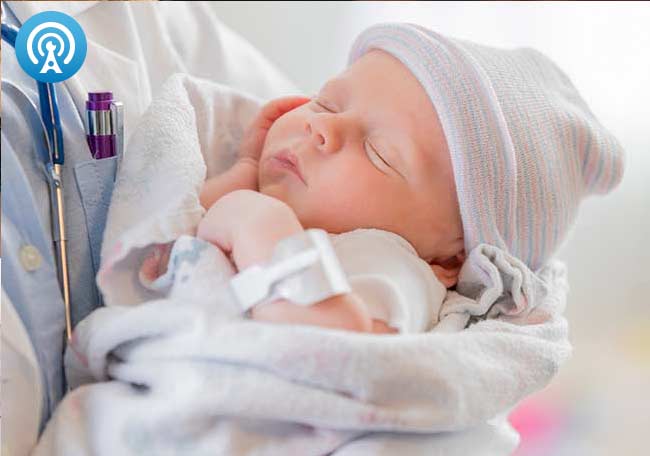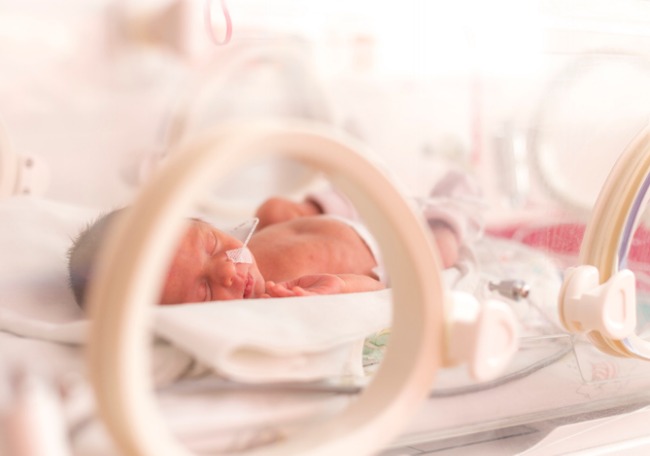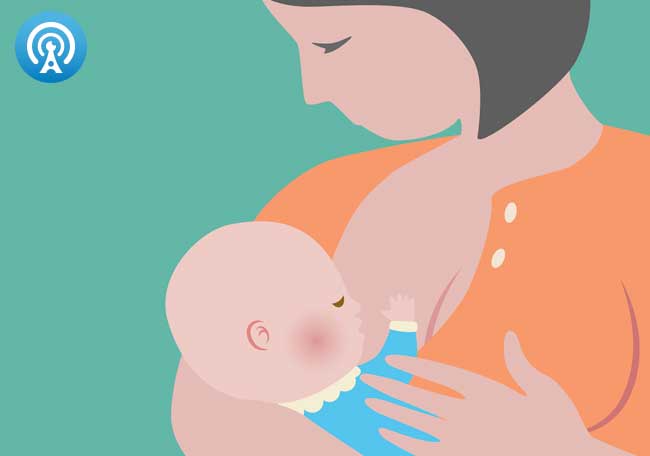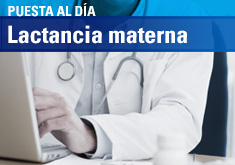Avances en la nutrición del recién nacido

1 Villar J, Giuliani F, Fenton TR, et al. INTERGROWTH-21st very preterm size at birth reference charts. Lancet 2016; 387: 844–45.
2 Bell EF, Acarregui MJ. Restricted versus liberal water intake for preventing morbidity and mortality in preterm infants. Cochrane Database Syst Rev 2014; 12: CD000503.
3 Morgan J, Young L, McGuire W. Delayed introduction of progressive enteral feeds to prevent ecrotising enterocolitis in very low birth weight infants. Cochrane Database Syst Rev 2014; 12: CD001970.
4 Brown JV, Embleton ND, Harding JE, McGuire W. Multi-nutrient fortification of human milk for preterm infants. Cochrane Database Syst Rev 2016; 5: CD000343.
5 Agostoni C, Buonocore G, Carnielli VP, et al. Enteral nutrient supply for preterm infants: commentary from the European Society of Paediatric Gastroenterology, Hepatology and Nutrition
Committee on Nutrition. J Pediatr Gastroenterol Nutr 2010; 50: 85–91.
6 Bauer J, Gerss J. Longitudinal analysis of macronutrients and minerals in human milk produced by mothers of preterm infants. Clin Nutr 2011; 30: 215–20.
7 Ip S, Chung M, Raman G, et al. Breastfeeding and maternal and infant health outcomes in developed countries. Evid Rep Technol Assess 2007; 153: 1–186.
8 Lucas A, Morley R, Cole TJ. Randomised trial of early diet in preterm babies and later intelligence quotient. BMJ 1998; 317: 1481–87.
9 Isaacs EB, Fischl BR, Quinn BT, Chong WK, Gadian DG, Lucas A. Impact of breast milk on intelligence quotient, brain size, and White matter development. Pediatr Res 2010; 67: 357–62.
10 Raiten DJ, Steiber AL, Hand RK. Executive summary: evaluation of the evidence to support practice guidelines for nutritional care of preterm infants-the Pre-B Project. Am J Clin Nutr 2016;
103: 599S–605S.
11 Sullivan S, Schanler RJ, Kim JH, et al. An exclusively human milk-based diet is associated with a lower rate of necrotizing enterocolitis than a diet of human milk and bovine milk-based products. J Pediatr 2010; 156: 562–67 e1.
12 Cristofalo EA, Schanler RJ, Blanco CL, et al. Randomized trial of exclusive human milk versus preterm formula diets in extremely premature infants. J Pediatr 2013; 163: 1592–95 e1.
13 Ng DV, Brennan-Donnan J, Unger S, et al. How close are we to achieving energy and nutrient goals for very low birth weight infants in the first week? JPEN 2015; published online July 9.
DOI:10.1177/0148607115594674.
14 Cormack BE, Bloomfield FH. Increased protein intake decreases postnatal growth faltering in ELBW babies. Arch Dis Child Fetal Neonatal Ed 2013; 98: F399–404.10.
15 Koletzko B, Goulet O, Hunt J, et al. Guidelines on paediatric parenteral nutrition of the European Society of Paediatric Gastroenterology Hepatology and Nutrition (ESPGHAN) and the
European Society for Clinical Nutrition and Metabolism (ESPEN) supported by the European Society of Paediatric Research J Pediatr Gastroenterol Nutr 2005; 41 (suppl 2): S1–87.
16 Vlaardingerbroek H, Vermeulen MJ, Rook D, et al. Safety and efficacy of early parenteral lipid and high-dose amino acid administration to very low birth weight infants. J Pediatr 2013;
163: 638–44 e1–5.
17 Lapillonne A, Kermorvant-Duchemin E. A systematic review of practice surveys on parenteral nutrition for preterm infants. J Nutr 2013; 143: 2061S–65S.
18 Corpeleijn WE, Vermeulen MJ, van den Akker CH, van Goudoever JB. Feeding very-low-birth-weight infants: our aspirations versus the reality in practice. Ann Nutr Metab 2011; 58 (suppl 1): 20–29.
19 Raiten DJ, Steiber AL, Carlson SE, et al. Working group reports: evaluation of the evidence to support practice guidelines for nutritional care of preterm infants-the Pre-B Project. Am J Clin Nutr 2016; 103: 648S–78S.
20 Bonsante F, Iacobelli S, Latorre G, et al. Initial amino acid intake influences phosphorus and calcium homeostasis in preterm infants—it is time to change the composition of the early parenteral nutrition. PLoS One 2013; 8: e72880.
21 Mimouni FB, Mandel D, Lubetsky R, Senterre T. Calcium, phosphorus, magnesium and vitamin D requirements of the preterm infant. In: Koletzko B, ed. Nutritional care of preterm infants: scientific basis and practical guidelines. Basel: S. Karger AG, 2014: 140–51.
22 Ribeiro Dde O, Lobo BW, Volpato NM, da Veiga VF, Cabral LM,de Sousa VP. Influence of the calcium concentration in the presence of organic phosphorus on the physicochemical compatibility and stability of all-in-one admixtures for neonatal use. Nutr J 2009; 8: 51.
23 Brown JV, Embleton ND, Harding JE, McGuire W. Multi-nutrient fortification of human milk for preterm infants. Cochrane Database Syst Rev 2016; 5: CD000343.
24 Ziegler EE. Meeting the nutritional needs of the low-birth-weight infant. Ann Nutr Metab 2011; 58 (suppl 1): 8–18.
25 Osborn DA, Bolisetty S, Jones LJ, Sinn JKH. Systematic review of higher versus lower amino acid intake in parenteral nutrition for newborn infants. J Paediatr Child Health 2016; 52 (suppl 2): 58.
26 Uthaya S, Liu X, Babalis D, et al. Nutritional evaluation and optimisation in neonates: a randomized, double-blind controlled trial of amino acid regimen and intravenous lipid composition in preterm parenteral nutrition. Am J Clin Nutr 2016; 103: 1443–52.
27 Morgan C, McGowan P, Herwitker S, Hart AE, Turner MA. Postnatal head growth in preterm infants: a randomized controlled parenteral nutrition study. Pediatrics 2014; 133: e120–28.
28 Fenton TR, Premji SS, Al-Wassia H, Sauve RS. Higher versus lower protein intake in formula-fed low birth weight infants. Cochrane Database Syst Rev 2014; 4: CD003959.
29 Cormack BE, Embleton ND, van Goudoever JB, Hay WW Jr, Bloomfield FH. Comparing apples with apples: it is time for standardized reporting of neonatal nutrition and growth studies. Pediatr Res 2016; 79: 810–20.
30 Lapillonne A, Eleni dit Trolli S, Kermorvant-Duchemin E. Postnatal docosahexaenoic acid deficiency is an inevitable consequence of current recommendations and practice in preterm infants. Neonatology 2010; 98: 397–403.
31 dit Trolli SE, Kermorvant-Duchemin E, Huon C, Bremond-Gignac D, Lapillonne A. Early lipid supply and neurological development at one year in very low birth weight (VLBW) preterm infants. Early Hum Dev 2012; 88 (suppl 1): S25–29.
32 Waitzberg DL, Torrinhas RS, Jacintho TM. New parenteral lipid emulsions for clinical use. JPEN 2006; 30: 351–67.
33 Kapoor V, Glover R, Malviya MN. Alternative lipid emulsions versus pure soy oil based lipid emulsions for parenterally fed preterm infants. Cochrane Database Syst Rev 2015; 12: CD009172.
34 Mola-Schenzle E, Staffler A, Klemme M, et al. Clinically stable very low birthweight infants are at risk for recurrent tissue glucose fluctuations even after fully established enteral nutrition. Arch Dis Child Fetal Neonatal Ed 2015; 100: F126–31.
35 Lucas A, Morley R, Cole TJ. Adverse neurodevelopmental outcome of moderate neonatal hypoglycaemia. BMJ 1988; 297: 1304–08.
36 Tin W, Brunskill G, Kelly T, Fritz S. 15-year follow-up of recurrent “hypoglycemia” in preterm infants. Pediatrics 2012; 130: e1497–503.
37 Kerstjens JM, Bocca-Tjeertes IF, de Winter AF, Reijneveld SA, Bos AF. Neonatal morbidities and developmental delay in moderately preterm-born children. Pediatrics 2012; 130: e265–72.
38 Sunehag A, Gustafsson J, Ewald U. Very immature infants (< or = 30 Wk) respond to glucose infusion with incomplete suppression of glucose production. Pediatr Res 1994; 36: 550–55.
39 Mitanchez-Mokhtari D, Lahlou N, Kieffer F, Magny JF, Roger M, Voyer M. Both relative insulin resistance and defective islet beta-cell processing of proinsulin are responsible for transient
hyperglycemia in extremely preterm infants. Pediatrics 2004;113: 537–41.
40 Beardsall K, Vanhaesebrouck S, Ogilvy-Stuart AL, et al. Prevalence and determinants of hyperglycemia in very low birth weight infants: cohort analyses of the NIRTURE study. J Pediatr
2010; 157: 715–19 e1–3.
41 Stensvold HJ, Strommen K, Lang AM, et al. Early enhanced parenteral nutrition, hyperglycemia, and death among extremely low-birth-weight infants. JAMA Pediatr 2015; 169: 1003–10.
42 Alexandrou G, Skiold B, Karlen J, et al. Early hyperglycemia is a risk factor for death and white matter reduction in preterm infants. Pediatrics 2010; 125: e584–e91.
43 Alsweiler JM, Harding JE, Bloomfield FH. Neonatal hyperglycaemia increases mortality and morbidity in preterm lambs. Neonatology 2013; 103: 83–90.
44 Bottino M, Cowett RM, Sinclair JC. Interventions for treatment of neonatal hyperglycemia in very low birth weight infants. Cochrane Database Syst Rev 2011; 10: CD007453.
45 Alsweiler JM, Weston AF, Bloomfield FH. The effect of a change in parenteral nutrition on the incidence of neonatal hyperglycaemia. J Paediatr Child Health 2010; 46 (suppl 1): 28.
46 Drenckpohl D, McConnell C, Gaffney S, Niehaus M, Macwan KS. Randomized trial of very low birth weight infants receiving higher rates of infusion of intravenous fat emulsions during the first weekof life. Pediatrics 2008; 122: 743–51.
47 Beardsall K, Vanhaesebrouck S, Ogilvy-Stuart AL, et al. Early insulin therapy in very-low-birth-weight infants. N Engl J Med 2008;359: 1873–84.
48 Alsweiler JM, Harding JE, Bloomfield FH. Tight glycemic control with insulin in hyperglycemic preterm babies: a randomized controlled trial. Pediatrics 2012; 129: 639–47.
49 Lipchock SV, Reed DR, Mennella JA. The gustatory and olfactory systems during infancy: implications for development of feeding behaviors in the high-risk neonate. Clin Perinatol 2011; 38: 627–41.
50 Zolotukhin S. Metabolic hormones in saliva: origins and functions. Oral Dis 2013; 19: 219–29.
51 Teff KL. How neural mediation of anticipatory and compensatory insulin release helps us tolerate food. Physiol Behav 2011;103: 44–50.
52 Stewart JE, Feinle-Bisset C, Golding M, Delahunty C, Clifton PM, Keast RS. Oral sensitivity to fatty acids, food consumption and BMI in human subjects. Br J Nutr 2010; 104: 145–52.
53 Bartocci M, Winberg J, Ruggiero C, Bergqvist LL, Serra G, Lagercrantz H. Activation of olfactory cortex in newborn infants after odor stimulation: a functional near-infrared spectroscopy study. Pediatr Res 2000; 48: 18–23.
54 Yildiz A, Arikan D, Gozum S, Tastekin A, Budancamanak I. The effect of the odor of breast milk on the time needed for transition from gavage to total oral feeding in preterm infants. J Nurs Scholarsh 2011; 43: 265–73.
55 Beker F, Opie G, Noble E, Jian Y, Bloomfield FH. Smell and taste to improve nutrition in very preterm infants: a randomized controlled pilot trial. Neonatology 2017; 111: 260–66.
Comentarios
Para ver los comentarios de sus colegas o para expresar su opinión debe ingresar con su cuenta de IntraMed.













